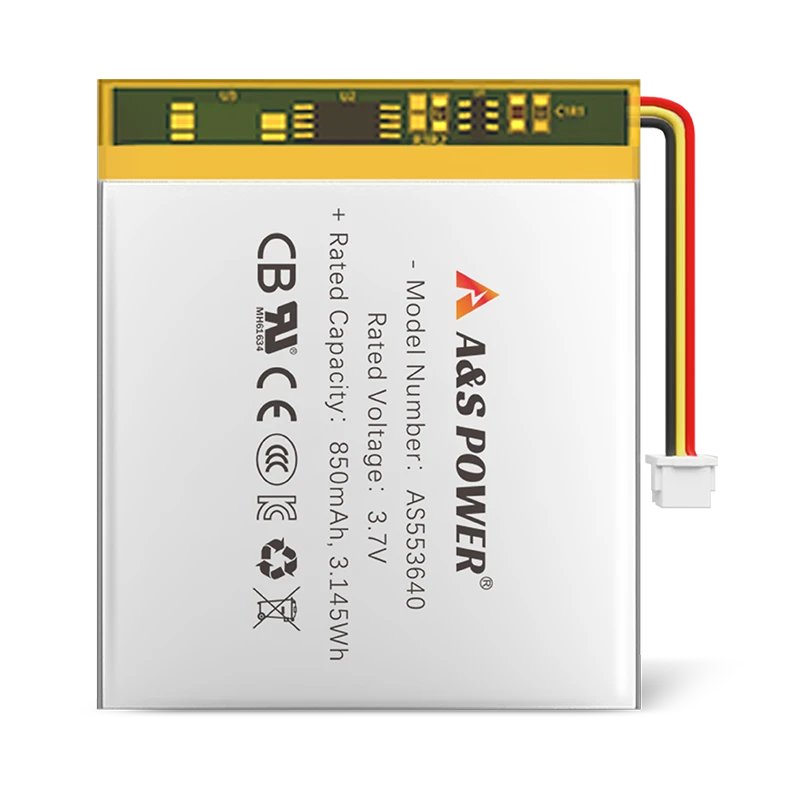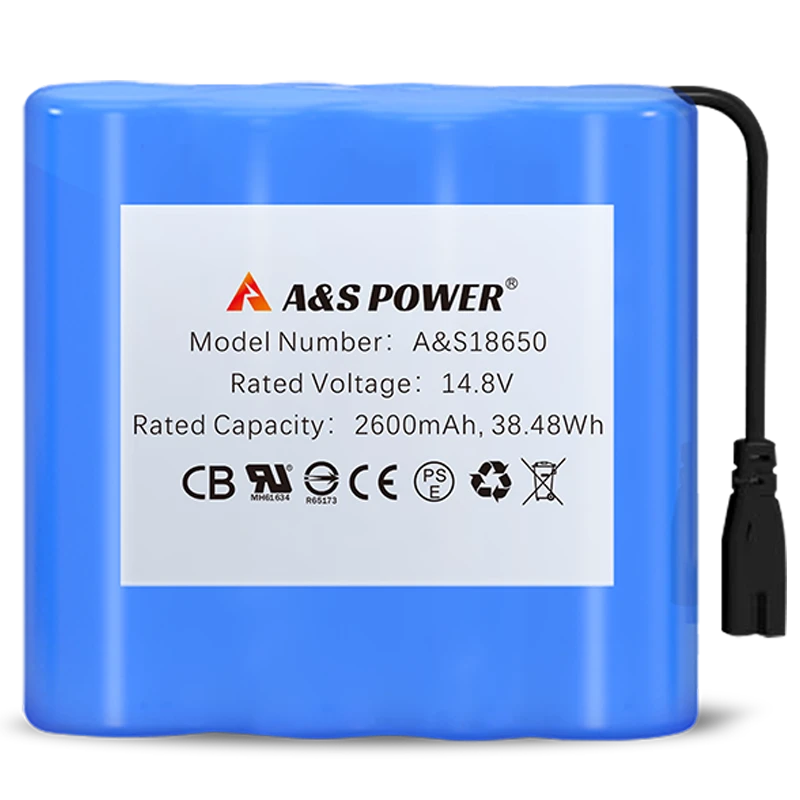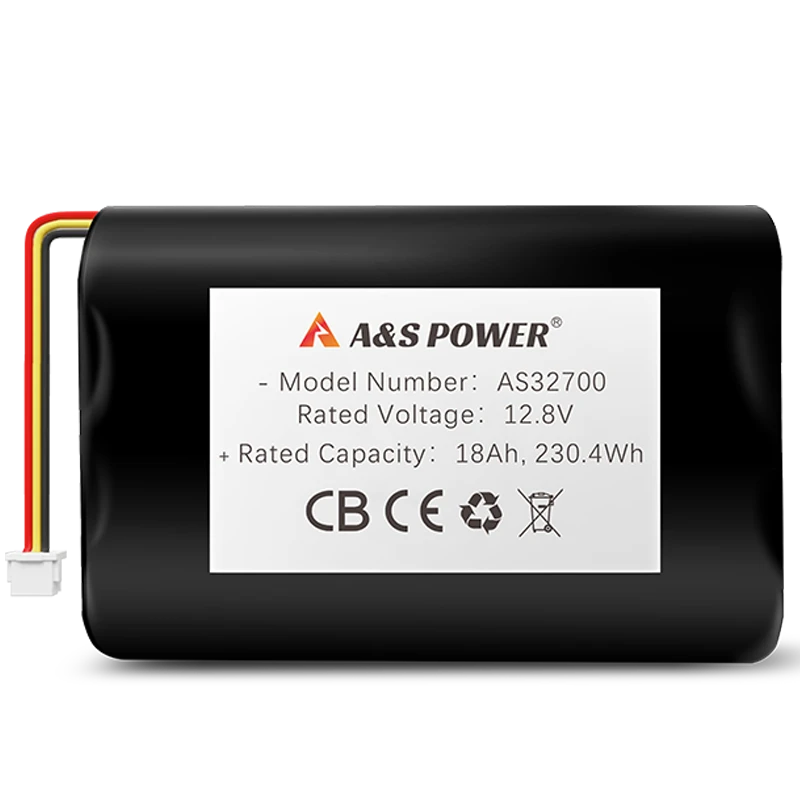Effective Tips to Prevent Swelling in Li-polymer Batteries
Effective Tips to Prevent Swelling in Li-polymer Batteries
Swelling in a li-polymer battery poses safety risks and can damage your devices. You can prevent this issue by adopting proper charging, storage, and usage habits. For instance, maintaining an appropriate charge level and avoiding extreme temperatures can reduce stress on lipo cells. These practices not only ensure your batteries stay safe but also extend their lifespan and maintain consistent performance. By understanding and implementing these methods, you protect both your devices and yourself from potential hazards.
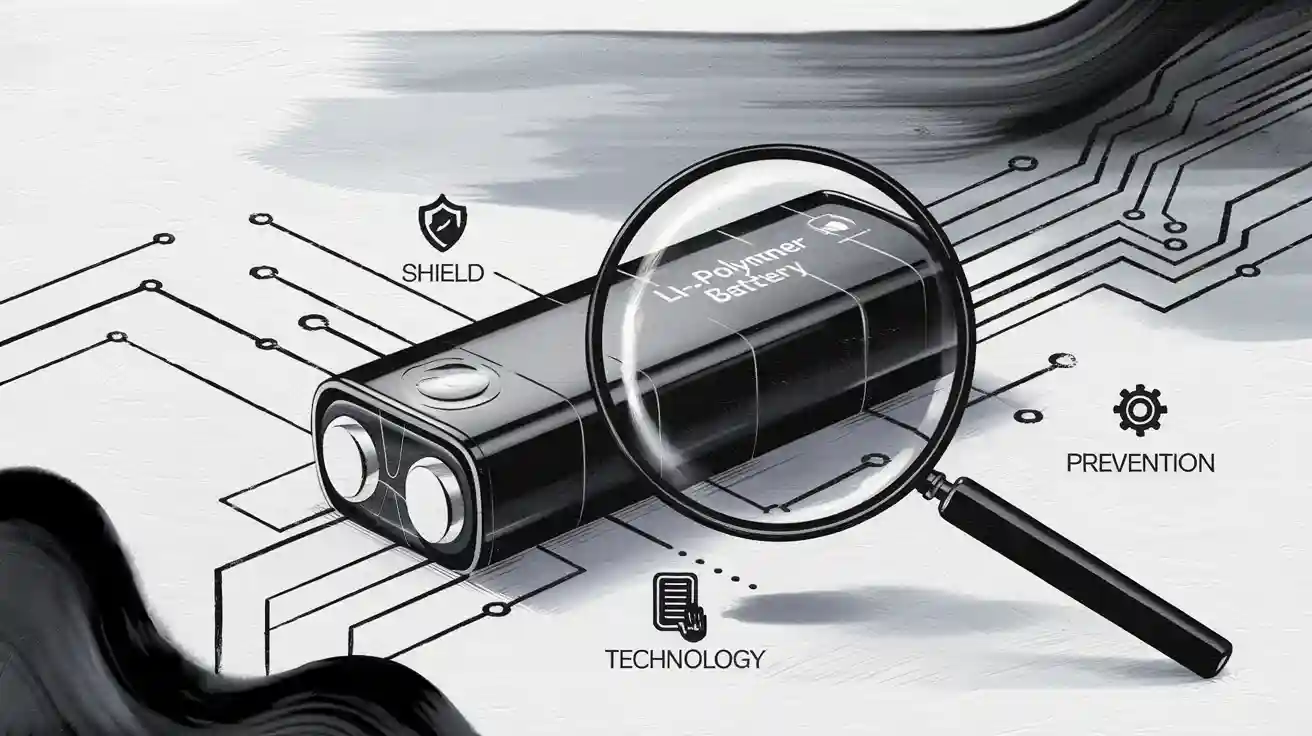
Key Takeaways
- Stop charging your battery when it is fully charged. This helps avoid swelling and makes the battery last longer.
- Keep your li-polymer batteries in a cool and dry spot. The best temperature is between 59°F and 77°F to keep them stable.
- Check your battery often for problems like swelling or poor performance. Finding issues early can stop dangerous situations.
- Use chargers made for your battery type. This keeps charging safe and lowers the chance of overheating.
- Replace batteries that are old or broken right away. This prevents leaks or fires and keeps your device safe.
Causes of Li-polymer Battery Swelling
Overcharging and its impact
Overcharging occurs when you leave a battery connected to a charger beyond its recommended capacity. This practice forces excess energy into the cells, causing internal pressure to build up. Overcharging and over-discharging are among the leading causes of lipo battery swelling. When you overcharge lithium polymer batteries, the chemical reactions inside the cells become unstable, leading to gas formation. This swelling not only reduces the battery's lifespan but also increases the risk of fire or explosion. Always use a charger designed for your li-polymer battery to prevent these dangers.
High-temperature exposure
Exposing your lipo battery to high temperatures can accelerate chemical reactions inside the cells. Heat weakens the battery's structure, making it more prone to swelling. For instance, leaving your device in a hot car or charging it near a heat source can cause irreversible damage. High temperatures also amplify the dangers of lipo battery swelling by increasing the likelihood of thermal runaway—a condition where the battery overheats uncontrollably. To avoid this, always store and charge your batteries in a cool, dry environment.
- Tip: Keep your li-polymer battery away from direct sunlight and other heat sources to maintain its performance and safety.
Physical damage risks
Physical damage to a lipo battery can compromise its internal structure, leading to swelling. Dropping or puncturing the battery can cause internal short circuits, which generate heat and gas. Even minor dents or cracks can escalate into serious safety hazards. Poor quality or aging batteries are particularly vulnerable to physical damage. Handle your batteries with care and inspect them regularly for signs of wear or damage. If you notice any abnormalities, replace the battery immediately to avoid further risks.
Aging and natural wear
All li-polymer batteries experience aging over time, which naturally leads to wear and tear. As the battery ages, its chemical composition degrades, reducing its ability to hold a charge effectively. This degradation often results in the formation of gas within the cells, causing the battery to swell. Even with proper care, aging is an inevitable process that impacts performance and safety.
You may notice signs of aging in your li-polymer battery, such as reduced runtime, slower charging, or visible swelling. These symptoms indicate that the battery's internal components are breaking down. The electrolyte inside the battery becomes less stable, which increases the risk of gas buildup. If left unchecked, this can lead to further swelling or even dangerous situations like leakage or fire.
To minimize the effects of aging, you should adopt proactive maintenance habits. Regularly monitor the battery's health and replace it when it shows signs of significant wear. Avoid deep discharges, as they accelerate the aging process. Storing the battery at a partial charge when not in use for extended periods can also slow down natural wear.
- Note: Even high-quality batteries will age over time. However, choosing a trusted brand ensures better longevity and safety.
By understanding the natural aging process, you can take steps to extend the lifespan of your li-polymer battery. Proper care and timely replacement reduce the risks associated with aging and help maintain optimal performance.
Tips to Avoid a Swollen Battery During Charging
Use the correct charger and voltage
Using the right charger is one of the most effective ways to prevent lipo battery swelling. Chargers designed for li-polymer batteries regulate voltage and current to ensure safe charging. Using an incompatible charger can lead to overcharging and over-discharging, which destabilizes the battery's internal chemistry. This instability often results in swelling or, in severe cases, fire hazards.
Always check the voltage and current ratings on your charger to confirm compatibility with your battery. Many modern chargers come with built-in safety features, such as automatic shutoff and temperature monitoring, to protect your battery. Investing in a high-quality charger may seem costly, but it significantly reduces the risks associated with improper charging.
- Tip: Avoid using generic or unbranded chargers. Stick to chargers recommended by the battery manufacturer for optimal safety and performance.
Avoid overcharging or leaving the battery plugged in
Overcharging is a leading cause of lipo battery swelling. When you leave a battery plugged in after it has reached full capacity, excess energy builds up inside the cells. This energy generates heat and gas, which can cause the battery to swell or even catch fire.
To avoid this, unplug your battery as soon as it is fully charged. Many modern devices include indicators or notifications to alert you when charging is complete. If your device lacks this feature, consider setting a timer to remind yourself to unplug it.
- Lithium-ion batteries can overheat and catch fire if overcharged.
- Using an incorrect charger can lead to overcharging and potential explosions.
- Never leave lithium-ion batteries charging unattended.
By following these precautions, you can charge properly and extend the lifespan of your battery while minimizing safety risks.
Charge in a cool, dry environment
Temperature plays a critical role in the health of lipo batteries. Charging in a hot or humid environment accelerates chemical reactions inside the battery, increasing the risk of swelling. High temperatures can also weaken the battery's structural integrity, making it more prone to damage.
Always charge your battery in a cool, dry location. Avoid placing it near heat sources like radiators, stoves, or direct sunlight. If you live in a humid climate, consider using a dehumidifier to maintain a safe environment for charging.
- Note: Charging your battery in extreme conditions not only shortens its lifespan but also increases the likelihood of lipo battery swelling.
By adopting these tips to avoid a swollen battery, you can ensure proper charging practices and maintain the safety and performance of your li-polymer battery.
Follow AS&Power’s charging recommendations
AS&Power provides specific charging guidelines to help you maintain the health and safety of your li-polymer battery. Following these recommendations ensures optimal performance and reduces the risk of swelling or other damage. Here are some key practices you should adopt:
- Use AS&Power-approved chargers: Always use chargers designed specifically for your battery model. These chargers regulate voltage and current, preventing overcharging and overheating. Generic chargers may lack these safety features, increasing the risk of damage.
- Monitor charging duration: Avoid leaving your battery connected to the charger for extended periods. AS&Power recommends unplugging the battery as soon as it reaches full capacity. This practice minimizes stress on the battery cells and extends their lifespan.
- Charge at recommended temperatures: AS&Power advises charging your battery in environments with temperatures between 59°F and 77°F. Charging outside this range can destabilize the battery's internal chemistry, leading to swelling or reduced efficiency.
- Follow specific charging cycles: For long-term storage, AS&Power suggests maintaining a partial charge of around 40-60%. This prevents deep discharges and reduces the effects of aging on the battery.
- Tip: Refer to the user manual or AS&Power's official website for detailed charging instructions tailored to your battery model.
By adhering to these recommendations, you can significantly enhance the safety and longevity of your li-polymer battery. Proper charging habits not only protect your battery but also ensure consistent performance for your devices.
Prevent Lipo Battery Swelling with Proper Storage
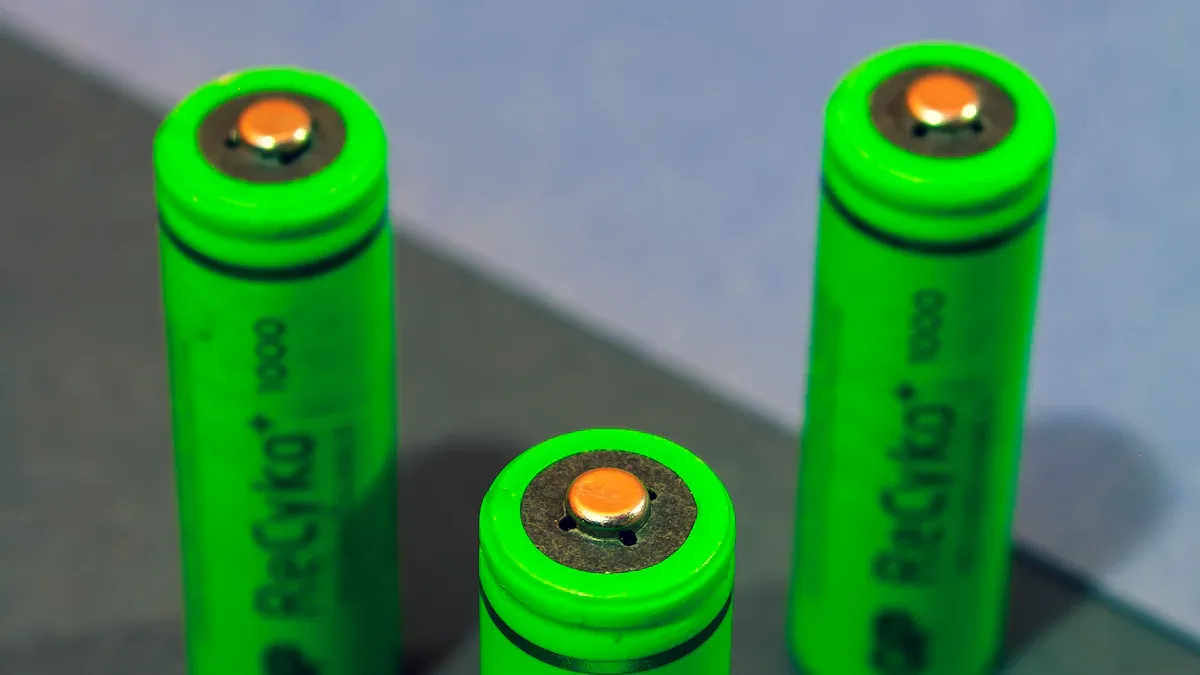
Proper storage plays a crucial role in preventing lipo battery swelling. By following specific guidelines, you can protect your batteries from damage and ensure their longevity. Below are essential storage practices to help you maintain the safety and performance of your li-polymer battery.
Store at optimal temperatures (59°F to 77°F)
Temperature is a critical factor in the health of lipo batteries. Storing them at optimal temperatures between 59°F and 77°F minimizes the risk of chemical instability. Extreme heat accelerates chemical reactions inside the battery, leading to swelling. On the other hand, freezing temperatures can damage the battery's internal components, reducing its efficiency.
To avoid extreme temperatures, choose a storage location that remains stable throughout the year. Avoid areas like attics, garages, or outdoor sheds, as these spaces often experience significant temperature fluctuations. If you live in a region with extreme weather conditions, consider using a temperature-controlled storage solution.
- Tip: Use a thermometer to monitor the storage area's temperature and ensure it stays within the recommended range.
Maintain a partial charge for long-term storage
When storing your li-polymer battery for an extended period, maintaining a partial charge is essential. A charge level of around 40-60% is ideal for long-term storage. Fully charged or deeply discharged batteries are more prone to swelling due to increased stress on the cells.
Before storing, check the battery's charge level using a reliable battery management system or a voltage meter. If the charge is too high or too low, adjust it accordingly. For devices with built-in batteries, refer to the manufacturer's guidelines for storage recommendations.
- Note: Periodically check the battery's charge level during storage. Recharge it to the recommended range if it drops below 40%.
Avoid humid or damp conditions
Humidity can significantly impact the safety and performance of lipo batteries. Moisture can seep into the battery's casing, causing corrosion and compromising its internal structure. Over time, this can lead to lipo battery swelling or even leakage.
Store your batteries in a dry environment with low humidity levels. Use airtight containers or specialized storage bags to protect them from moisture. If you live in a humid climate, consider using a dehumidifier to maintain a safe storage environment.
- Alert: Never store your li-polymer battery near water sources or in areas prone to condensation, such as basements or bathrooms.
By adopting these proper storage practices, you can effectively prevent lipo battery swelling and extend the lifespan of your batteries. Safe storage not only protects your investment but also ensures the reliability of your devices.
Use AS&Power-approved storage solutions
Using AS&Power-approved storage solutions ensures the safety and longevity of your li-polymer batteries. These solutions are specifically designed to meet the unique requirements of lithium polymer cells, providing optimal protection against environmental factors and physical damage. By choosing these storage options, you can minimize the risks associated with improper storage and maintain the performance of your batteries.
AS&Power storage solutions offer several advantages that make them a reliable choice:
-
Temperature Regulation: These storage solutions are engineered to maintain stable temperatures, ensuring your batteries remain within the recommended range of 59°F to 77°F. This feature prevents overheating or freezing, which can lead to swelling or reduced efficiency.
-
Moisture Protection: AS&Power-approved containers are designed to keep humidity levels low. They use airtight seals and moisture-resistant materials to protect your batteries from corrosion and internal damage caused by damp conditions.
-
Durable Construction: The materials used in these storage solutions are robust and impact-resistant. This durability safeguards your batteries from physical damage, such as dents or punctures, which could compromise their structural integrity.
-
Convenient Design: AS&Power storage products are user-friendly and portable. They include features like compartments for organizing multiple batteries and labels for easy identification. These designs simplify the process of proper storage and make it easier to follow best practices.
-
Tip: Always store your batteries in AS&Power-approved solutions to reduce the risk of swelling and extend their lifespan.
When selecting a storage solution, ensure it is compatible with the size and type of your li-polymer batteries. Refer to the product specifications provided by AS&Power to confirm suitability. Proper storage is a critical aspect of battery maintenance, and investing in high-quality solutions can save you from costly replacements or potential safety hazards.
By adopting AS&Power-approved storage solutions, you can protect your batteries from environmental stressors and physical damage. This proactive approach not only enhances safety but also ensures your batteries deliver consistent performance over time.
Best Usage Habits to Prevent Lipo Battery Swelling
Avoid deep discharges
Deep discharges can significantly harm your lipo batteries and increase the risk of swelling. When you allow the battery to discharge below its recommended voltage, the internal chemical balance becomes unstable. This instability leads to gas formation, which causes lipo battery swelling. To prevent this, avoid using your battery until it is completely drained. Most devices include a low-battery warning—use this as a signal to recharge promptly.
For optimal performance, keep the charge level between 20% and 80%. This range reduces stress on the battery cells and slows down wear. If your device lacks a built-in battery management system, consider using an external voltage monitor to track the charge level accurately.
- Tip: Never leave your battery unused for extended periods in a deeply discharged state. Recharge it to a partial charge before storage to maintain its health.
Monitor battery health regularly
Regular inspection and maintenance are essential to prevent lipo battery swelling. Monitoring the battery's health helps you identify early signs of wear, such as reduced capacity or physical deformation. Addressing these issues promptly can prevent further damage.
A study on solid-state batteries highlights the importance of monitoring internal stress to reduce swelling risks. The findings revealed that volume changes during charging and discharging lead to mechanical degradation. In-situ pressure monitoring showed localized stress peaks, even when overall stress was reduced.
| Aspect | Details |
|---|---|
| Study Focus | Monitoring internal stress in solid-state batteries |
| Key Findings | Volume changes lead to swelling and mechanical degradation |
| Capacity Ratio | Negative/positive capacity ratio of 1.1 |
| Current Density | 2.0 mA cm−2 during testing |
| Stress Monitoring | In-situ pressure monitoring shows localized stress peaks despite overall stress reduction |
By conducting regular inspections, you can detect these stress points early and take corrective measures. Use tools like voltage meters or battery management systems to monitor performance and ensure safety.
Handle batteries carefully to prevent damage
Physical damage is a leading cause of lipo battery swelling. Dropping, puncturing, or mishandling the battery can compromise its internal structure, leading to short circuits and gas buildup. Always handle your batteries with care to avoid these risks.
Store your batteries in protective cases to shield them from accidental impacts. When inserting or removing a battery, avoid applying excessive force. For devices with built-in batteries, follow the manufacturer's guidelines to prevent damage during maintenance or replacement.
- Alert: If you notice any physical damage, such as dents or leaks, stop using the battery immediately and dispose of it safely.
By adopting these best usage habits, you can minimize the risk of lipo battery swelling and extend the lifespan of your batteries. Proper care ensures consistent performance and protects your devices from potential hazards.
Replace old or damaged batteries promptly
Old or damaged li-polymer batteries pose significant risks to your devices and personal safety. As batteries age, their internal components degrade, increasing the likelihood of swelling, leakage, or even fire hazards. Prompt replacement ensures you avoid these dangers and maintain optimal performance for your devices.
Why replacing damaged batteries is critical
Damaged batteries often exhibit signs like visible swelling, reduced runtime, or overheating during use. These symptoms indicate compromised internal chemistry, which can lead to gas buildup or short circuits. Continuing to use such batteries not only reduces efficiency but also increases the risk of catastrophic failure.
- Alert: Using a swollen or damaged battery can result in device malfunctions, property damage, or personal injury. Replace it immediately to avoid these risks.
How to identify when a battery needs replacement
You should regularly inspect your batteries for signs of wear or damage. Look for physical deformities, such as bulges or cracks, and monitor performance indicators like charging speed and runtime. If the battery struggles to hold a charge or heats up excessively, it’s time to replace it.
- Physical signs: Swelling, dents, or leaks.
- Performance issues: Reduced capacity or overheating.
- Age-related wear: Batteries older than two years often show significant degradation.
Best practices for replacing batteries
When replacing a battery, choose a high-quality product from a trusted brand like AS&Power. Ensure compatibility with your device and verify safety certifications. Avoid purchasing generic or unbranded batteries, as they may lack essential safety features.
- Tip: Dispose of old batteries responsibly by following local recycling regulations. Many communities offer designated drop-off points for safe disposal.
Replacing old or damaged batteries promptly protects your devices and ensures consistent performance. Regular inspections and proactive replacements minimize risks and extend the lifespan of your equipment.
What to Do If Your Lipo Battery Swells
Stop using the battery immediately
If you notice signs of bulging or swelling in your lipo battery, stop using it right away. Continuing to use a swollen battery increases fire and explosion risks. Swelling indicates internal damage, often caused by overcharging and over-discharging, which destabilizes the battery's chemical structure. This instability can lead to dangerous outcomes, including thermal runaway.
Inspect your battery regularly for abnormalities like puffing, overheating, or reduced performance. If you detect any of these issues, disconnect the battery from your device and avoid charging it further. Handling a puffed lipo battery with care is crucial to prevent accidental damage or short circuits.
- Alert: Never attempt to puncture or repair a swollen battery. Doing so can release harmful gases and increase the risk of fire.
Safely dispose of the swollen battery
Proper disposal of a swollen battery is essential to ensure safety. Swelling often results from internal gas buildup, which can cause the battery to rupture if mishandled. Place the damaged battery in a fireproof container or a non-conductive bag to minimize risks during transportation.
Avoid throwing the battery in regular trash bins, as improper disposal can lead to environmental hazards or accidental fires. Instead, take it to a designated battery recycling center or contact your local waste management authority for guidance.
- Tip: Use insulated gloves when handling a puffed lipo battery to protect yourself from potential leaks or burns.
Follow local recycling regulations
Recycling regulations vary by region, so it’s important to follow local guidelines when disposing of a swollen battery. Many communities offer drop-off points for electronic waste, including damaged batteries. These facilities ensure safe handling and recycling of hazardous materials.
Check your local government’s website or contact a certified recycling center for specific instructions. Some manufacturers also provide take-back programs for used batteries, making it easier to dispose of them responsibly. Adhering to these regulations not only protects the environment but also reduces the risk of fire and explosion during disposal.
- Note: Recycling swollen batteries prevents harmful chemicals from contaminating the environment and ensures compliance with safety standards.
Consider AS&Power for replacement solutions
When replacing a swollen battery, choosing a trusted brand ensures safety and performance. AS&Power stands out as a reliable provider of high-quality replacement solutions tailored to meet your needs. Their products are designed with advanced safety features and industry-leading technology, making them a dependable choice for your devices.
Why Choose AS&Power?
- Certified Safety Standards: AS&Power batteries comply with international safety certifications, ensuring they meet rigorous quality benchmarks. This reduces the risk of overheating, swelling, or other hazards.
- Wide Compatibility: Their replacement batteries are compatible with a variety of devices, from smartphones to drones. This versatility makes it easier to find the right fit for your equipment.
- Enhanced Durability: AS&Power uses premium materials to manufacture batteries that last longer and perform consistently. This durability minimizes the need for frequent replacements.
- Eco-Friendly Options: The company prioritizes sustainability by offering recyclable batteries and take-back programs for old units.
Tip: Always verify the compatibility of the replacement battery with your device before purchase. Refer to the product specifications provided by AS&Power for guidance.
How to Get Started
Visit AS&Power’s official website or authorized retailers to explore their range of replacement batteries. Use their customer support services to get expert advice on selecting the right product. By choosing AS&Power, you invest in a solution that prioritizes safety, performance, and environmental responsibility.
Replacing your battery with an AS&Power product ensures peace of mind and optimal device functionality. Their commitment to quality and innovation makes them a trusted partner for all your battery needs.
The Importance of Quality Products in Battery Maintenance
Choose trusted brands like AS&Power
When it comes to preventing lipo battery swelling, the brand you choose plays a critical role. Trusted manufacturers like AS&Power prioritize safety and performance in their products. They use advanced technology and rigorous testing to ensure their lithium polymer batteries meet high standards. By choosing high-quality batteries from reputable brands, you reduce the risk of defects that can lead to swelling or other hazards.
Reputable brands also provide detailed usage and maintenance guidelines. These instructions help you maximize the lifespan of your li-polymer battery while minimizing risks. Avoid generic or unbranded options, as they often lack the quality control measures necessary for safe operation.
- Tip: Always verify the authenticity of the brand before purchasing. Counterfeit products can compromise safety and performance.
Look for safety certifications
Safety certifications are essential indicators of a battery's reliability. Certified lithium polymer batteries undergo extensive testing to meet international safety standards. These certifications ensure the battery can handle various conditions without compromising its integrity.
Look for labels such as UL, CE, or RoHS on the packaging. These certifications confirm that the product has passed tests for electrical safety, environmental compliance, and material quality. Batteries without these certifications may pose significant risks, including lipo battery swelling or even fire hazards.
| Certification | Purpose | Importance |
|---|---|---|
| UL | Electrical safety | Ensures safe operation under load |
| CE | European compliance | Confirms adherence to EU safety standards |
| RoHS | Restriction of hazardous substances | Reduces environmental and health risks |
- Alert: Never purchase batteries without visible safety certifications. They may not meet the necessary quality standards.
Invest in reliable battery management systems
A reliable battery management system (BMS) is a crucial tool for maintaining your li-polymer battery. These systems monitor and regulate the battery's performance, ensuring it operates within safe parameters. A good BMS prevents overcharging, deep discharges, and overheating—common causes of lipo battery swelling.
Modern BMS solutions also provide real-time data on battery health. This information helps you identify potential issues early, allowing you to take corrective action before they escalate. Investing in a high-quality BMS not only enhances safety but also extends the lifespan of your batteries.
- Note: Pair your BMS with batteries from trusted brands like AS&Power for optimal results. This combination ensures maximum safety and performance.
By choosing trusted brands, verifying safety certifications, and using reliable battery management systems, you can effectively prevent issues like swollen batteries. These practices ensure your batteries remain safe, efficient, and long-lasting.
Preventing lipo battery swelling starts with understanding its causes and adopting proper habits for charging, storage, and usage. These practices protect your devices, extend battery lifespan, and ensure consistent performance. Regular monitoring and timely replacements further enhance safety. By choosing trusted brands like AS&Power, you gain access to high-quality batteries and accessories designed to minimize risks. Take proactive steps today to maintain your battery’s health and reliability.
FAQ
What causes lipo batteries to swell?
Swelling occurs due to overcharging, exposure to high temperatures, or physical damage. These factors destabilize the battery's internal chemistry, leading to gas buildup. Regular maintenance and proper usage can help you avoid these issues.
Can you fix a swollen lipo battery?
No, you cannot repair a swollen battery. Attempting to fix it can be dangerous. Instead, stop using it immediately and dispose of it safely at a certified recycling center.
How can you safely store lipo batteries?
Store them in a cool, dry place with temperatures between 59°F and 77°F. Use airtight containers to protect against humidity. Avoid storing them near heat sources or in damp environments.
How long do lipo batteries typically last?
With proper care, they can last 2-3 years or around 300-500 charge cycles. Factors like charging habits, storage conditions, and usage frequency affect their lifespan.
What should you do if a lipo battery overheats?
Stop using the battery immediately and move it to a safe, non-flammable area. Allow it to cool naturally. Do not attempt to charge or use it again. Dispose of it responsibly if it shows signs of damage.
-

 May.2025.06.10How LiFePO4 Batteries Improve Generator Efficiency and DurabilityLearn More
May.2025.06.10How LiFePO4 Batteries Improve Generator Efficiency and DurabilityLearn More -

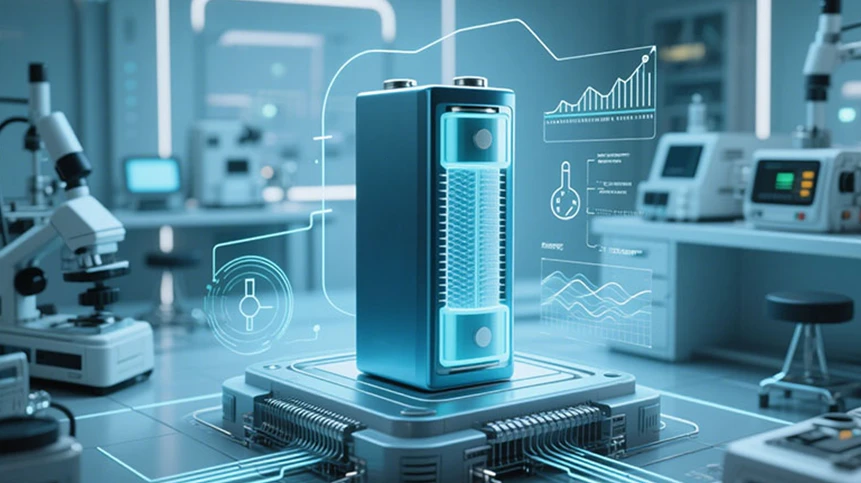 May.2025.06.06How to Realize the Safety Characteristics of Li-ion Batteries?Learn More
May.2025.06.06How to Realize the Safety Characteristics of Li-ion Batteries?Learn More -

 May.2025.05.11GLOBAL LITHIUM WRAP: China carbonate price at 14-month high, hydroxide moves higherLearn More
May.2025.05.11GLOBAL LITHIUM WRAP: China carbonate price at 14-month high, hydroxide moves higherLearn More -

 May.2025.05.11Industrial Segment Of Global Lithium-Ion Battery Market Could Exceed $24 Billion By 2027Learn More
May.2025.05.11Industrial Segment Of Global Lithium-Ion Battery Market Could Exceed $24 Billion By 2027Learn More -

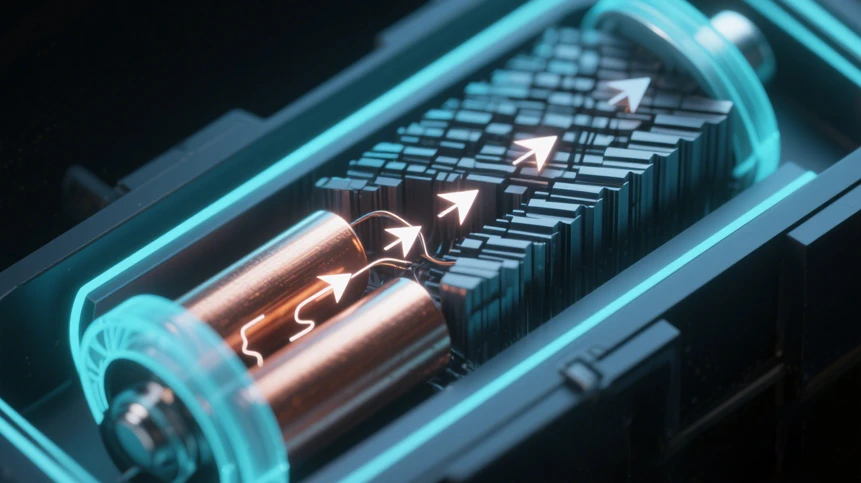 May.2025.05.11Engineers produce long lasting, energy density batteryLearn More
May.2025.05.11Engineers produce long lasting, energy density batteryLearn More




